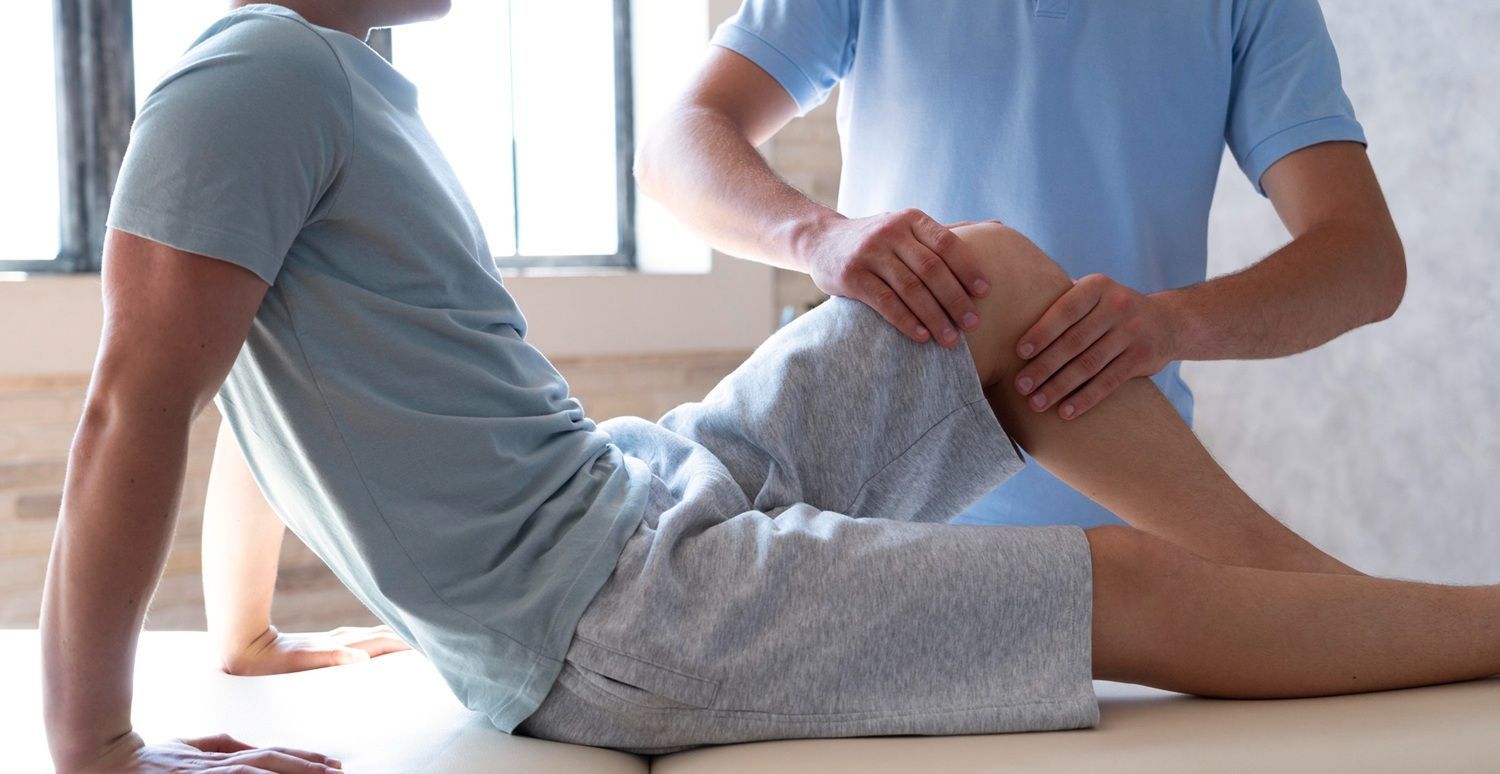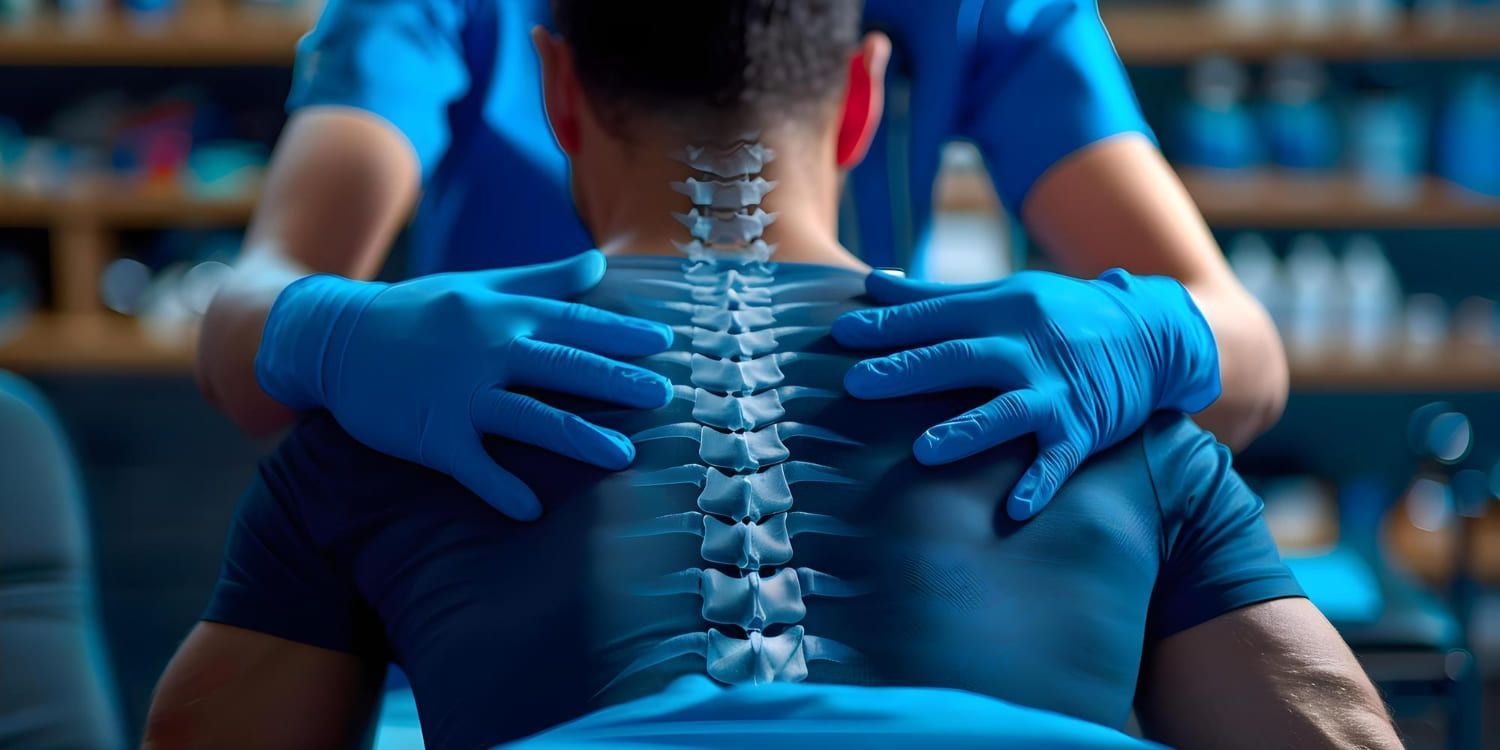FISHER CHIRROPRACTIC: 1001 Crosspointe Dr Suite 1, Naples, FL 34110
FISHER CHIROPRACTIC BLOG
FISHER CHIROPRACTIC BLOG
7 Awesome Benefits of Kinesiology Tape
Fisher Chiropractic Blogger • March 18, 2020
There are many great benefits of kinesiology tape. If you would like to learn more about using this tape, then you should click here.

You don't need to be an athlete to have muscle or joint aches.
Over 16 million Americans
report suffering from chronic back pain.
Fifteen million people
across the country have arthritis and struggle daily with joint paint.
Pain suffers can pop over-the-counter and expensive prescription medication to counteract pain symptoms. They can rack up medical bills from repeat doctor and specialist visits.
Or, they could try a more natural treatment instead.
Kinesiology tape has been around for decades and is a very viable treatment option for several conditions. Let's take a look at the benefits of kinesiology tape to see if it's right for you.
What is K-Taping?
Before we delve into the benefits of support tape, let's look at what it is.
Kinesiology tape
is an adhesive that you apply directly to your skin. Its elastic properties allow for a full range of motion and gives the tape a skin-like quality.
While you can tape yourself, it's best applied by a medical professional like a chiropractor
first. Your chiropractor can assess your condition to determine if taping is the right for you.
Most kinesiology tape is made from a mixture of cotton, spandex, and adhesive. These materials are what set it apart from other athletic tapes on the market.
Traditional athletic tape is made from cotton. This material is not flexible and won't be able to provide and stretch as k-tape.
1. It Can Provide Muscle and Joint Support
One of the most well-known benefits of taping is an increase in muscle and joint support.
Unlike medical tape, k-tape promotes natural movements. Some studies suggest that it can enhance your overall endurance and ability to move.
A 2017 study
with stroke patients showed that k-tape could improve their ability to walk. The tape reduces the pressure that's created when the patient walks. It also helps to stimulate muscle activity.
Taping can help strengthen muscles that have lost function. It can also retrain muscles that have become accustomed to an irregular way of working.
2. It Can Reduce Swelling and Inflammation
Taping causes a reduction of pressure on the lymphatic drainage channels. This encourages the removal of fluids, as well as any other materials that may collect where your injury is.
Kinesiology tape provides a passive lift to your skin when you use it. This will allow your lymphatic system to drain any swollen tissues faster. You may even find that taping post-workout can help remove lactic acids that contribute to exercise-related muscle soreness.
K-tape is excellent to use post-injury as well as post-surgery.
Some patients who suffer from chronic inflammatory conditions may also see success with taping.
3. It Can Improve Blood Circulation
If you already have an injury, exercise tape may be able to help reduce swelling to the area.
A 2017 study
suggests that taping can improve blood flow, regardless of the tension applied.
Some believe that taping can help improve the circulation of lymphatic fluids, too.
It's believed that when the tape is used, it makes extra subcutaneous space. This causes changes in the pressure gradient under your skin. These pressure changes can help your lymphatic fluids flow better.
4. It Can Increase Athletic Performance
Athletes may find performance enhancements when they start taping.
K-tape isn't meant to immobilize joints like standard athletic tape. It acts like a rubber band to support muscles and tendons.
Athletes should consider using k-tape after they've been injured, too. Taping can help them remain active despite their injury, helping them return to their regular schedules faster.
Depending on the application technique, taping can prevent overstretching injured muscles.
5. It Can Help Heal Bruises
K-tape can make quick work of your bruises. Bruises occur when veins and capillaries under your skin break. While they're not usually a huge cause for concern, large bruises can be very painful.
Taping works by creating a space between your top layer of skin and underlying tissues. This reduces pressure and allows pooled blood to drain out.
6. It Can Reduce Pain and How Your Body Perceives It
Painful muscles and joints affect everyone at some point in their lives. You don't need to be a hardcore athlete to feel the effects of a sore body. If you're curious about a natural approach to muscle and joint pain relief, k-tape can help.
When you use tape, your skin lifts slightly. This lift reduces pressure on the sensitive pain receptors under your skin.
Regardless of what condition you have, be it tennis elbow
or shoulder pain, k-tape can help.
Some believe that taping can change how your body views pain and compression. Your body tissues all have sensory receptors that feel pain, hot, cold, and touch. These receptors help your brain to make sense of where your body is at and what's going on.
When you use k-tape, you're creating a lift that unloads your tissues. This tissue decompression can change how your brain reads these signals.
One study suggests reductions in trigger point pain
and increased flexibility when k-tape and manual pressure were used in conjunction.
7. You Won't Become Reliant on It
If you overuse support braces like knee or wrist wraps, your body can become reliant on the extra support. If overused, these body braces can do more harm than good.
K-tape is meant to be very flexible and non-restrictive. Your body will not become reliant on taping to thrive.
Not to mention, bulky braces and wraps can limit your performance and how you move. They can be very uncomfortable. Taping won't restrict your range of motion, allowing you to perform your regular duties as usual.
Reap the Benefits of Kinesiology Tape
The benefits of kinesiology tape are clear. If you're aching and at your wit's end, it may be time to try something different. Don't let the simplicity of taping fool you; k-tape is a real contender in the world of muscle and joint relief.
If you're curious about kinesiology tape, let us help you. Request an appointment today, so we can help you get the relief you need.

By Chiropractic Blogger
•
February 18, 2025
Discover the truth behind chiropractic care! We debunk the top 10 misconceptions about chiropractic treatments, from safety concerns to effectiveness. Learn how chiropractic care can improve your health beyond just back pain. Read now and separate fact from fiction!

By Chiropractic Blogger
•
February 7, 2025
Discover the key differences between chiropractic care and traditional medicine, and learn when to choose each approach. Explore their benefits, treatment methods, and how they can work together for optimal health. Make an informed decision for your well-being today!
Business Hours
Monday: 8AM - 12PM, 1PM - 6PM
Tuesday: 8AM–12PM
Wednesday: 8AM–12PM
Thursday: 8AM–12PM, 1–6PM
Friday: 8AM–12PM
Saturday & Sunday: CLOSED
© 2025
All Rights Reserved | Fisher Chiropractic







